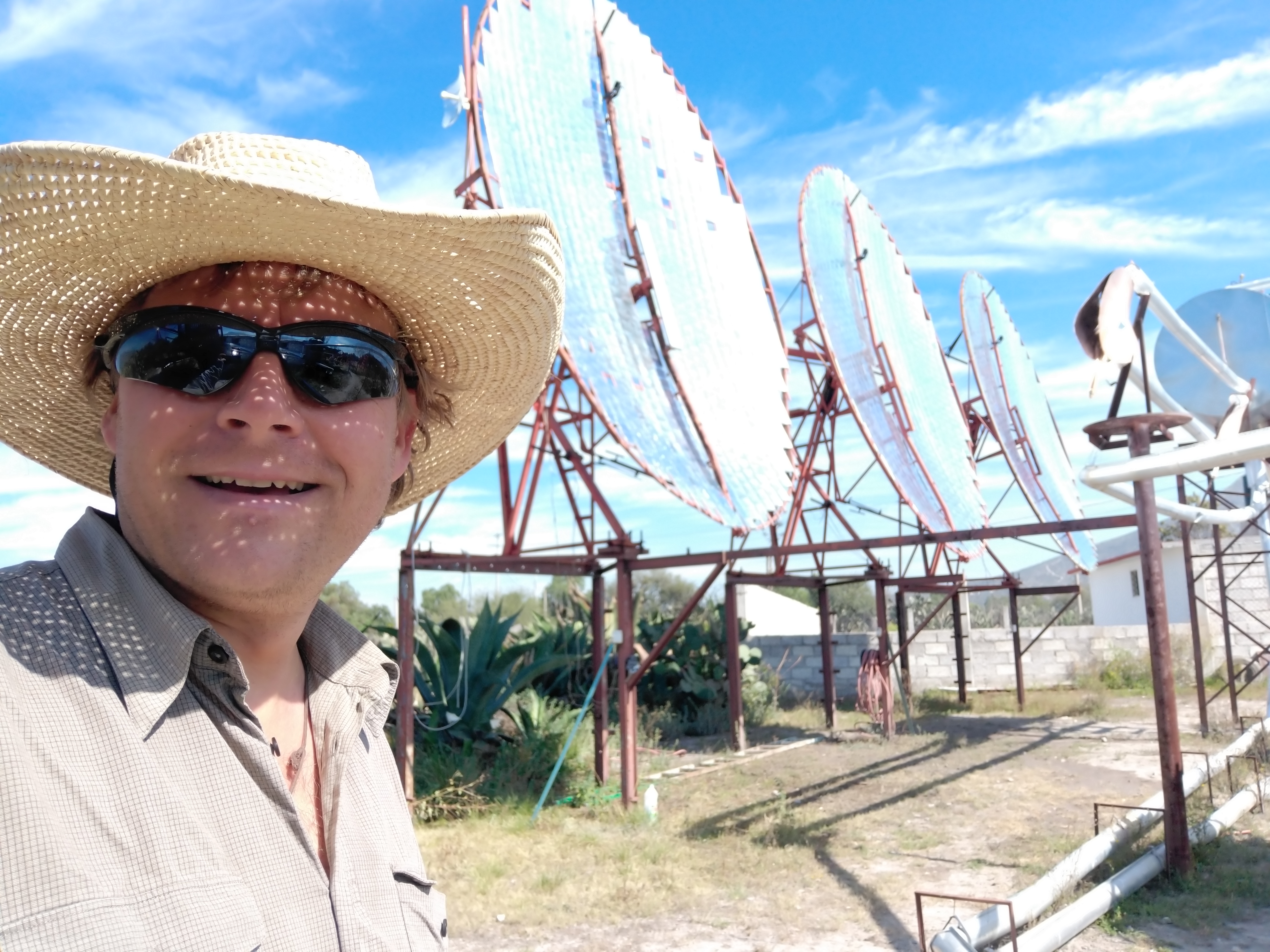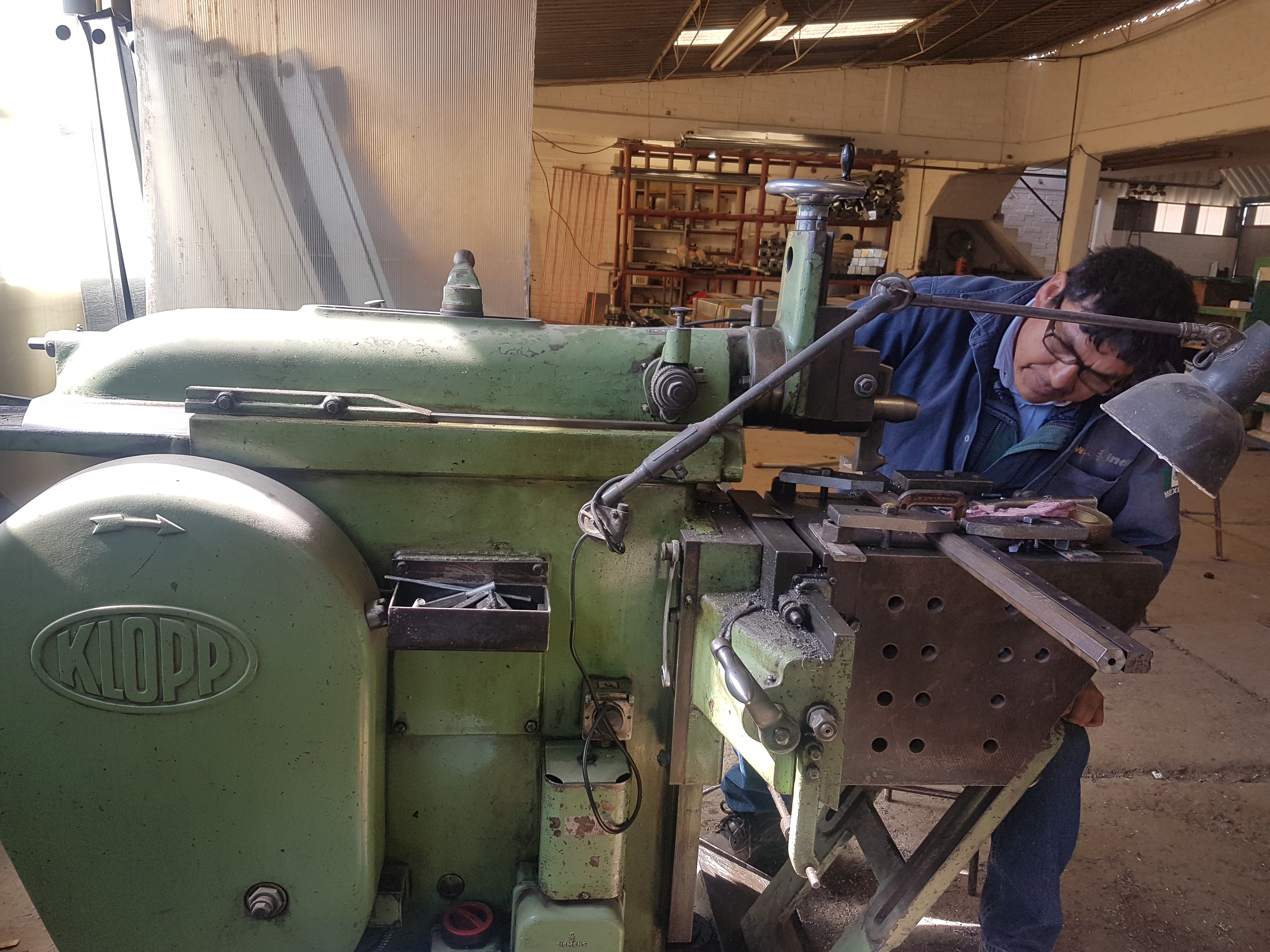“I Love epNetwork’s Spirit of a Positive Stubbornness to Realize Ideas”

Gregor Schäpers is a long-term member of empowering people. Network (epNetwork) and was among the winners of the empowering people. Award (epAward) in 2013. He founded his business, Trinysol, in 2006 and grew it out of nothing by combining proven solar technology called Scheffler reflectors (1) with a fresh entrepreneurial approach. In the last 2 years, he and his team took some major steps and prepared the business for a promising future.
The story started in 1998 when Gregor went to a small Mexican village called El Sauz (Cardonal) for his foreign civil service. During the following two years, he organized social projects in the rural region and started to experiment with small solar cookers. After completing his service, he studied Regional Sciences with a focus on Latin America in Germany until 2003. Afterwards, he returned to Mexico, as he believed in the potential of the bigger Scheffler reflectors to build better ovens – and he got to know his wife there. Today, he still lives in El Sauz between solar reflectors and agaves, together with his wife and three children.
What were the challenges at the very beginning of your self-employment?
Before starting my own business, I had worked in an established, large metalworking factory for two years. But since its future was very uncertain, my area, solar technology, was not further promoted. So I decided to jump into the deep end and founded my own business. Initially, I had no place, no staff, no money, and not even a work permit.
 Gregor takes a moment to reflect next to a solar reflector installation.
Gregor takes a moment to reflect next to a solar reflector installation.
How did you go on from there? And why Scheffler reflectors?
I know many solar reflector models and approaches, but the Scheffler reflector is the most reasonable type as it’s physically well thought out. Although the inventor, Wolfgang Scheffler, (2) and his wife, Heike Hoedt, are working with a lot of effort on its distribution, it has yet to become widely accepted. I was hoping to be able to make a contribution from Mexico with our workshop. The combination of useful, promising technology and creating a job for myself were both motivations for me to build the business.
So, I started with simple, used machines I bought online and some self-built machines. The workshop consisted of a big flysheet and walls made of agave plant trunks. In order to afford to build Scheffler reflectors in the coming years, we first had to construct yard gates, window frames, fences, and solar hot water systems, which we still do ourselves today. Over the years, we’ve had individual projects and are now establishing a permanent series production – our biggest milestone! In the initial phase, we had a very instructive project with Scheffler reflectors financed by the Swiss association, globosol, that promotes solar projects, and plenty of practical and moral support by the developers. A further milestone is the use of the reflectors in tortilla bakeries and in our own solar agave syrup production.
 The making of a solar reflector takes time and skill, and this here is just one part of the process.
The making of a solar reflector takes time and skill, and this here is just one part of the process.
What feedback do you get from the community?
The users have to pay for their reflectors themselves, but it’s worth it. By using sunlight, they don’t have to pay for fossil fuels such as gas. All our customers have used their systems intensely and are very satisfied.
For example, the mother of a tortilla baker told me that she initially advised her son not to install reflectors on his roof as she thought it would be wasted money. About one year after the installation at her son’s bakery, she congratulated him on the investment because she noticed the technology’s advantages: For tortilla bakers, it’s not necessarily about being able to bake more goods, but about producing the usual amount more cheaply without being dependent on the rapidly increasing gas prices in Mexico anymore, which is possible with the Scheffler reflectors.
During the last few years, you extended and renovated the workshop – how did it come about? What’s new?
In 2016, I got the opportunity to take over an old, large workshop in Cardonal, which had not been used for several years. It’s about 20 times bigger than my original workshop and is equipped with many large metalworking machines for milling, folding, etc. Many of these machines have been brought from Germany and Europe, so they’re durable. But first, we had to bring the workshop back to life by renewing the entire electrical installation and the hall roof of 800 m². We reorganized the machines, set up new machines and a central warehouse, and established efficient production routes. With our modern workshop, we’re now building a first test series of 12×16 m² Scheffler reflectors. To expand our portfolio, we also build agricultural devices, solar hot water systems, and offer a repair service. Independent of these technical milestones, we have been providing 25 people with a permanent job for a few years now.
Congratulations on this huge achievement! You were also among the winners of the epAward in 2013. How has this affected your business?
Trinysol and our work are perceived differently. Although the Scheffler reflectors’ technology is more than 30 years old, it’s not very well known and is received with a lot of scepticism. The epAward has and continues to give us credibility and external recognition, along with a confirmation for ourselves – Siemens Stiftung, a global insitituion, has evaluated our work positively and sees the potential.
How do you feel about being a member of epNetwork?
It’s very enriching in the sense that one is in contact with other entrepreneurs and can develop friendships. The members work in other countries under completely different conditions and in different projects, but nevertheless, pursue their innovative projects with a sense of positive stubbornness. Also, the content of the empowering people. Workshop and the empowering people. Onsite is very helpful. These meetings with friends and epNetwork’s development cooperation team are always a good reminder that we are working together for a better world. Social entrepreneurs have to be connected in order to set up sustainable cooperations.
Speaking of good cooperations – what is your cooperation with epNetwork member Fraunhofer Institute about?
20 years ago, I first came across solar ovens and finally the large Scheffler reflectors by carrying out a wood stove project in rural villages. The concept and implementation of the Fraunhofer Institute with their solution, the wood stove WAFFCO (3), was very convincing for me. In the past, wood stoves have often been built with ineffective combustable bricks. Since the stove is built entirely of steel by the Fraunhofer Institute, we can manufacture it very well with our machines and offer it as a complete package. With a WAFFCO, families, bakeries, and cheese dairies can cook more easily and ecologically. I was enthusiastic about WAFFCO when I saw it at the epAward 2016 award ceremony in Berlin, so I contacted the institute and drove to Stuttgart to coordinate the cooperation a few days later. In our workshop kitchen, we’ve been cooking on an enlarged WAFFCO version for over 25 people every day. We started small series production in the second half of 2019.
Gregor, thank you for your time and insights and all the best to you and the Trinysol team.
(1) The solar reflectors can be used to bake, cook, or fry all kinds of food, and to generate steam. Based on the Scheffler type, they are built of steel sections presenting 16 m² of highly reflective aluminum. Powered by a sensor-controlled motor, the reflector rotates, following the course of the sun. The concentrated energy can be used for heating a plate of about 1 m² or an oven to 180-250 °C in about an hour.
(2) The Austrian physicist Wolfgang Scheffler (*1956) has been developing the ‘Scheffler’ parabolic reflector since the 1980s, mainly in Africa and Asia.
(3) Waste-Fuel Free Combustion